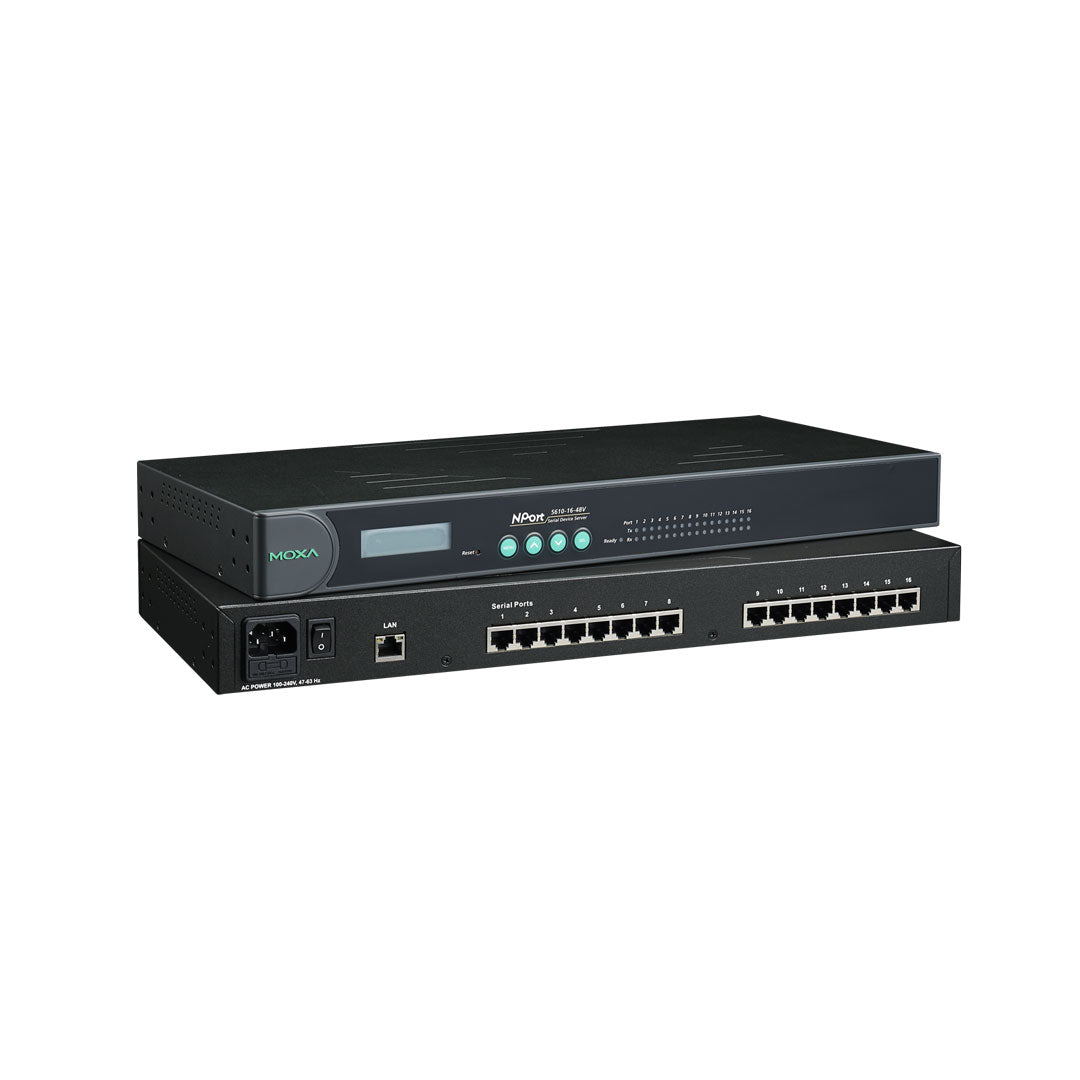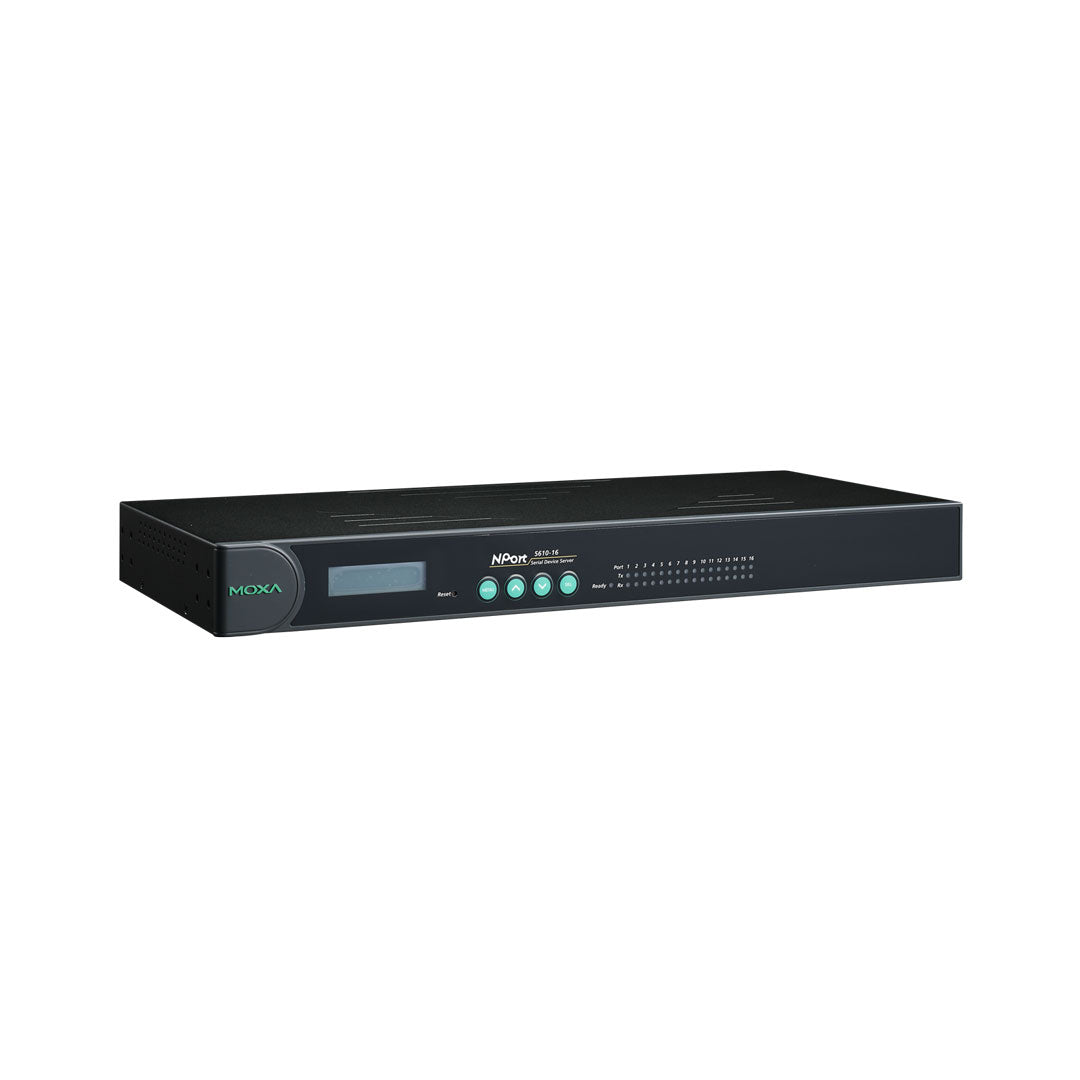- 16 RS232 serial ports
- Standard 19-inch rackmount size
- 10/100M auto-sensing Ethernet
- Built-in 15 KV ESD protection for all serial signals
- Easy IP address configuration with LCD panel
- Choice of configuration methods: Web console, Telnet console and Windows utility
- Versatile socket operation modes, including TCP Server, TCP Client, UDP and Real COM
- SNMP MIB-II for network management
Moxa NPort 5610-16 rackmount device server can conveniently and transparently connect up to 16 serial RS232 devices to an Ethernet, allowing you to network your existing serial devices with only basic configuration. Data transmission between the serial and Ethernet interfaces is bi-directional. By using NPort device servers, you not only protect your current hardware investment, but also allow for future network expansion. You can both centralize the management of your serial devices, and distribute management hosts over the network.
19-Inch Rackmount Device Server
NPort 5610-16 device servers come with Tx/Rx LEDs for the serial ports on the front panel and 16 RJ45 serial port connectors on the rear panel. Moxa NPort 5610-16 device servers are suitable for a standard 19-inch rackmount, allowing you to simplify operational, maintenance, and administrative tasks.
Real COM/TTY Ports
Real COM/TTY drivers are provided to make the serial ports on the NPort 5610-16 recognizable as Real COM ports by Windows, or Real TTY ports by Linux. In addition to supporting basic data transmission and reception, Moxa NPort drivers also support the RTS, CTS, DTR, DSR, and DCD control signals.
LED Indicators to Ease Your Maintenance Tasks
The System LED, serial Tx/Rx LEDs, and Ethernet LEDs (located on the RJ45 connector) provide a great tool for basic maintenance tasks and help engineers analyze problems in the field. The LEDs not only indicate current system and network status, but they also help field engineers monitor the status of attached serial devices.
This product is export-ready and classified under an international HS Code for smooth customs clearance. TNS ships worldwide via DHL Express, providing fast and reliable international delivery.
For customers in Singapore, we offer free local shipping on orders above SGD $80 — no extra handling fees.
Please contact TNS for key shipping and compliance details to support both local and international logistics planning.









